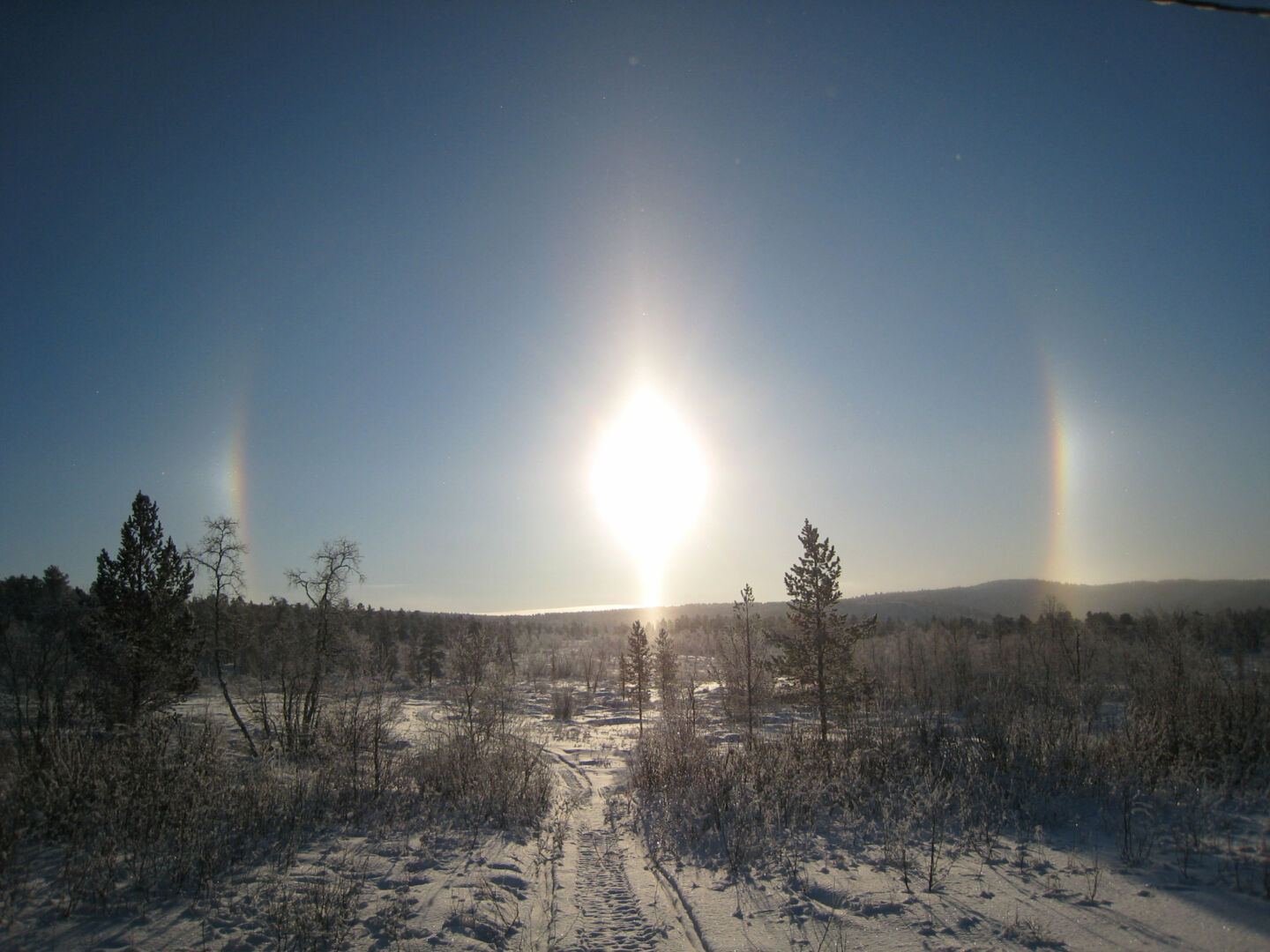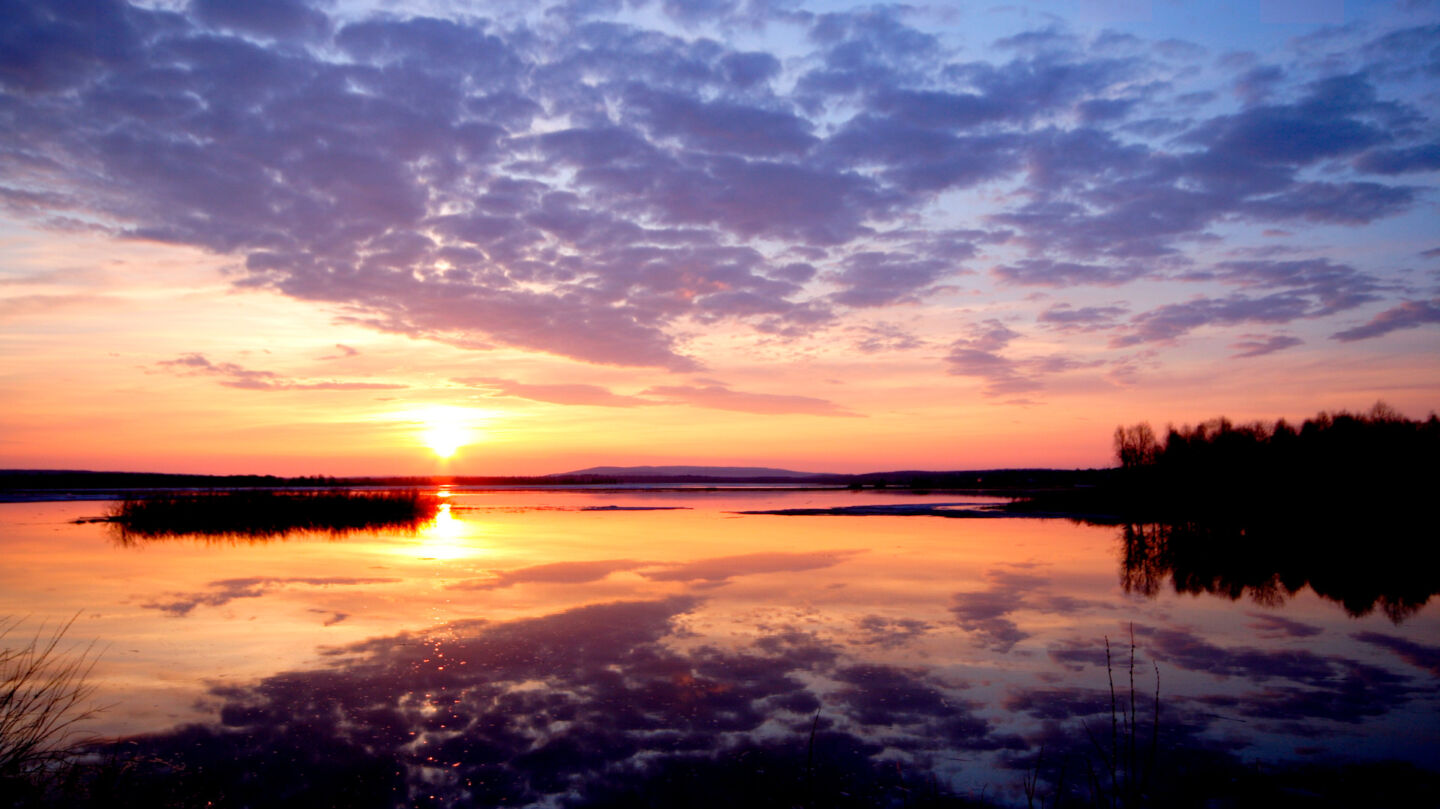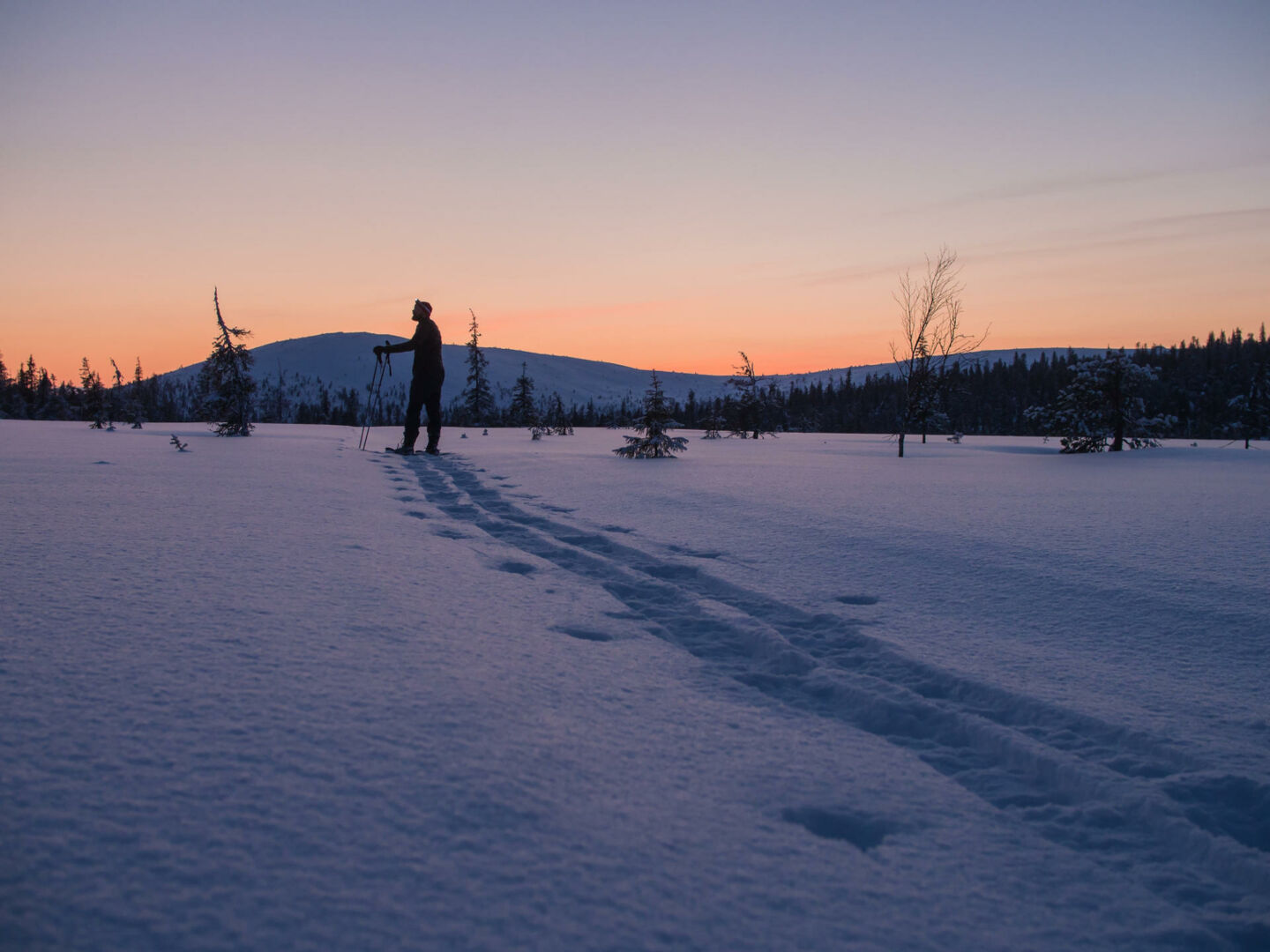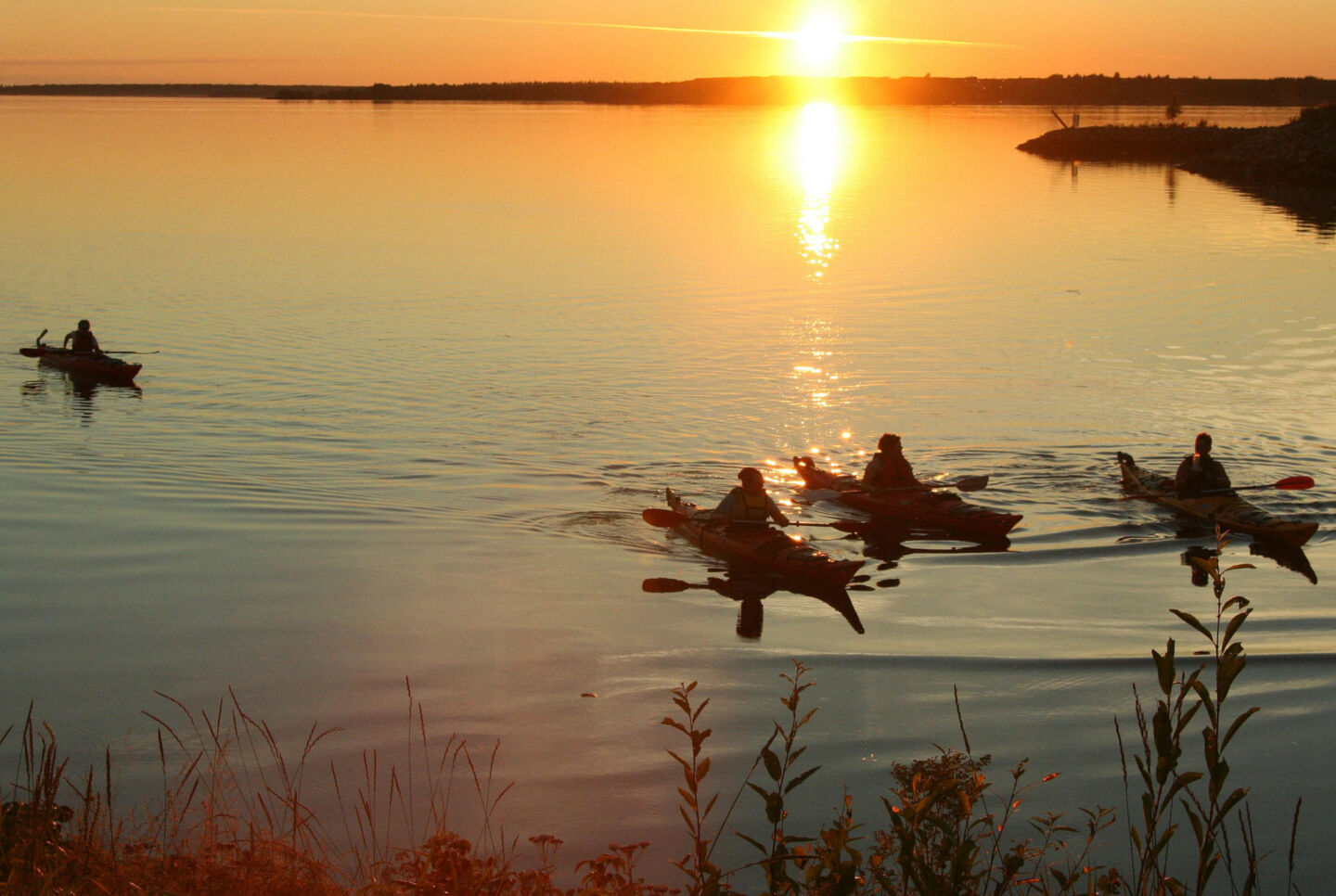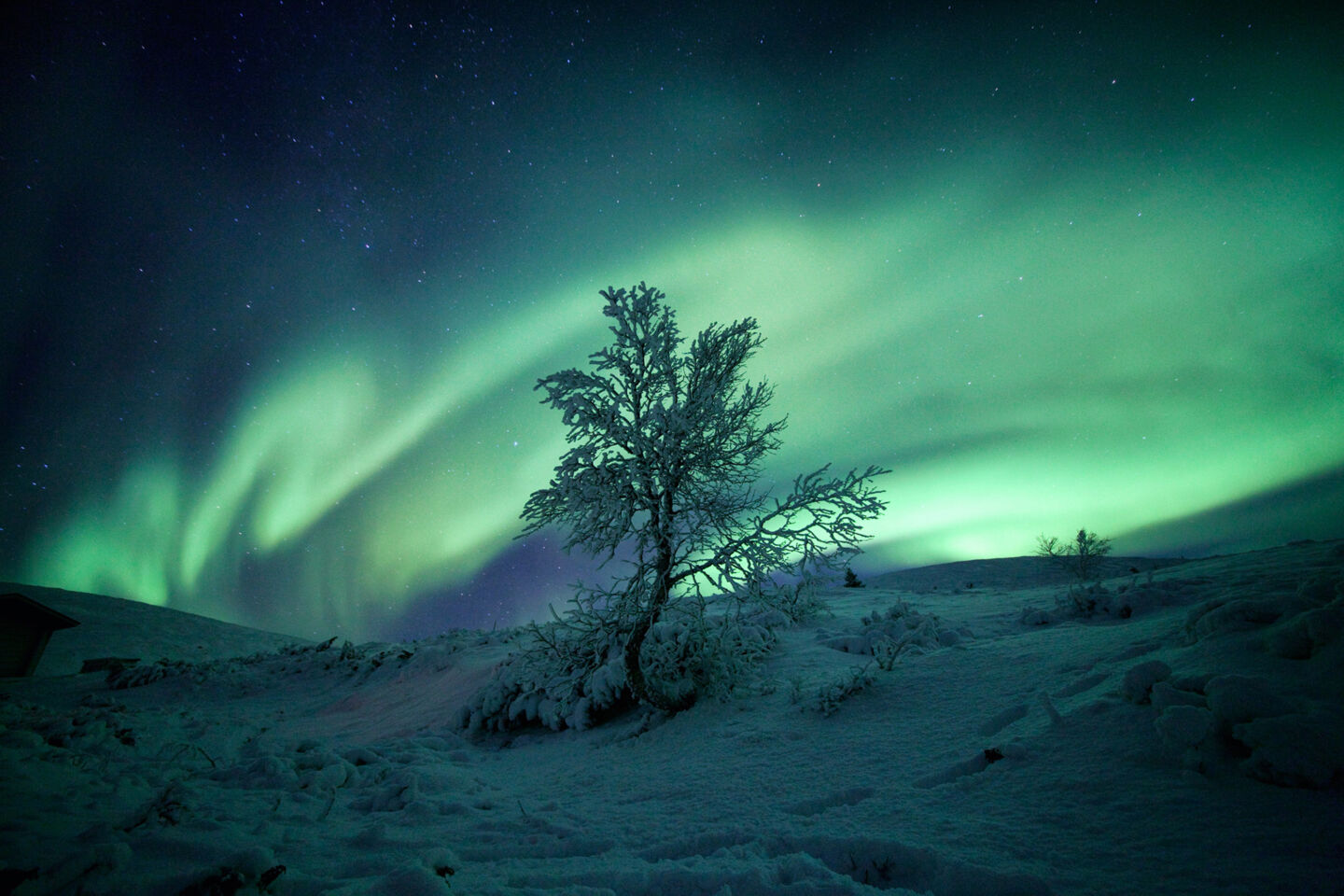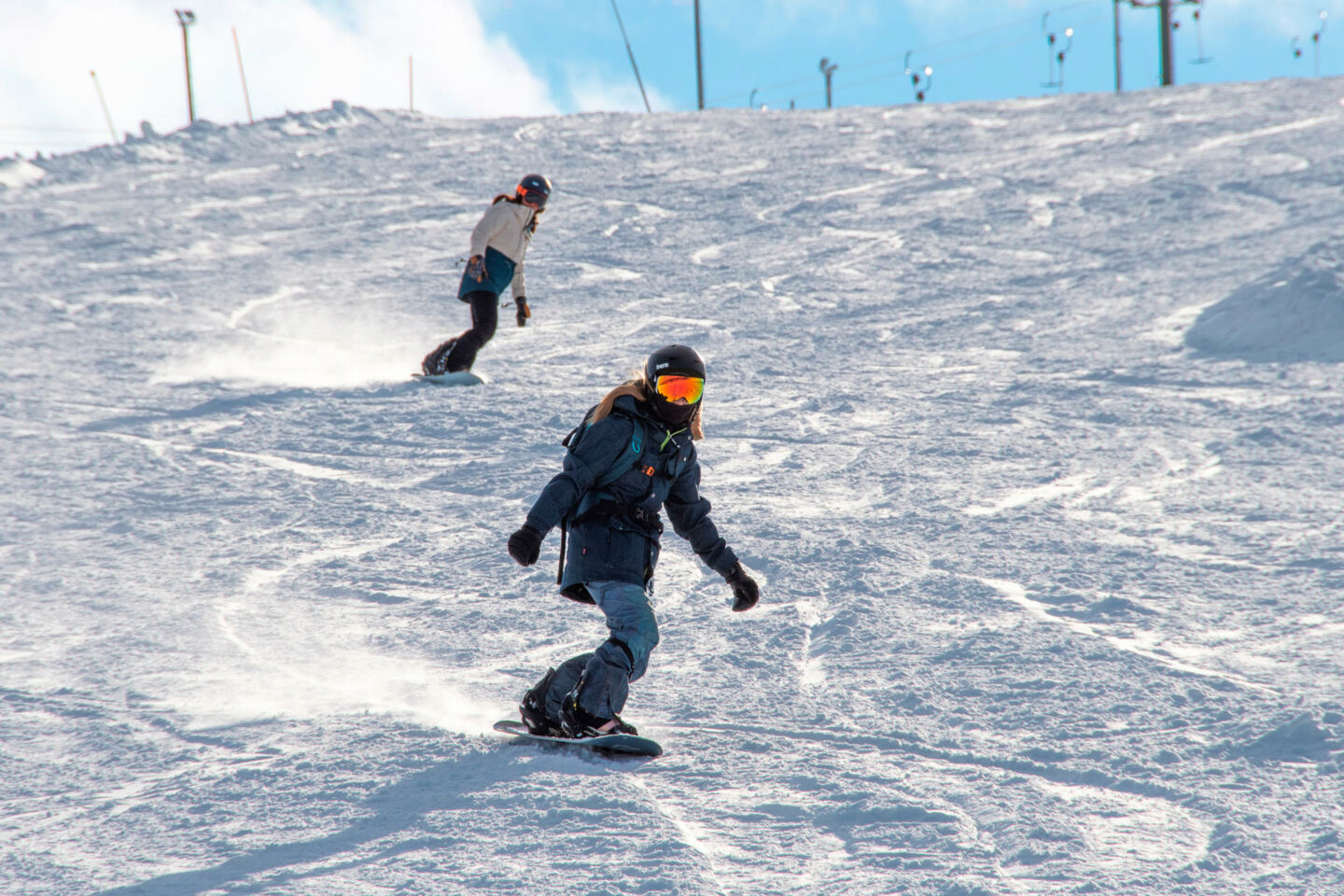Finnish Lapland’s location above the Arctic Circle means our daylight has a unique tone all year long, from the summer’s midnight sun to the soft glow of the winter months.
You can’t help but notice how the light of Lapland just hits differently than light elsewhere. It’s a combination of our extreme northern latitudes as well as natural phenomena like heavy snowfall in winter, low hills and rolling marshes in lieu of skyscraping mountains and, of course, our big sky unpolluted by industry or light. Here are some of the best natural lighting conditions you could ever ask for.
Polar Night
Lapland’s location above the Arctic Circle also means that during the winter season, there is a period of polar night when the sun remains under the horizon allowing hardly any daylight. This period lasts for a few weeks to several months depending on location.
During this period, called kaamos in Finnish, the variance of day and night can still be clearly noted, but the amount of light is very limited. In practice, dusk begins before dawn turns into day, making the light conditions artistically interesting. The famous blue moment with different shades of purple can be utterly beautiful and something really special to catch on film.
Midnight Sun
Summer stands for constant daylight around the clock. This provides opportunities for long shooting days and atmospheric sceneries that are possible only above the Arctic Circle. At Lapland’s northernmost, the sun does not set for 75 days during summer.
Often photographers and cinematographers speak of the golden hour and capturing the most beautiful golden light on camera as the sun sets. In Lapland, there is plenty of that golden hour time during the summer months.
Northern Lights / Auroras
One of the most spectacular phenomena over the Arctic sky is the illuminating light show of the Northern Lights. It is only visible when it’s dark (and the darker the better) and is at its strongest after the heavy solar activity of the sun. The legend says it is the tail of a fox that whisks the lights into the sky as he travels…
The Northern Lights return to Lapland in autumn and stick around all winter long.
Let there be light…
Polar night happens during mid-winter, from December to January. February to April is a period of intense brightness, as the sun sparkles off the deep white snow. Don’t forget your sunglasses, sunblock and a dimmer for your camera.



